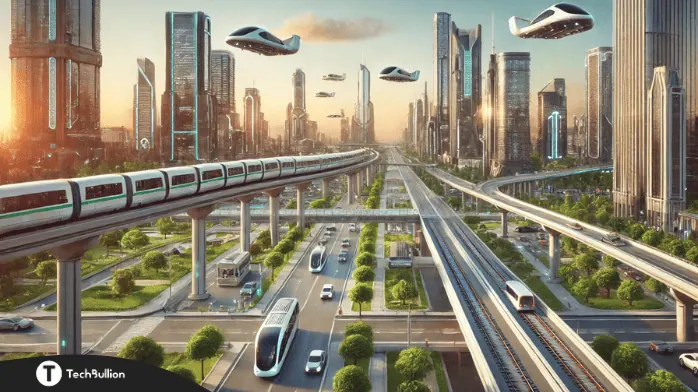
The world of transportation is undergoing rapid evolution, driven by technological advancements, environmental concerns, and changing consumer demands. The future of transportation promises cleaner, smarter, and more interconnected systems that will redefine how people and goods move across cities, countries, and continents. Let’s explore the emerging trends shaping the future of transportation and what we can expect in the coming decades.
Why the Future of Transportation Matters
Transportation impacts every aspect of modern life—from economic growth and environmental sustainability to urban planning and personal convenience. As we strive for greener solutions and more efficient systems, the transportation sector is embracing transformative technologies that will address these challenges.
Key Innovations Defining the Future of Transportation
1. Electric Vehicles (EVs) and Sustainable Mobility
The electrification of transportation is one of the most significant trends of our time. Electric vehicles (EVs) are replacing traditional gasoline-powered cars due to their eco-friendliness and cost efficiency.
- EVs reduce greenhouse gas emissions, combating climate change.
- Technological advances in batteries are increasing range and reducing charging time.
- Governments worldwide are incentivizing EV adoption through subsidies and tax breaks.
By 2030, we can expect EVs to dominate personal and commercial transportation, while extensive charging networks will ensure seamless travel across regions. Public transport systems, such as electric buses and trains, will also play a critical role in creating sustainable cities.
2. Autonomous Vehicles and Self-Driving Technology
Self-driving cars are no longer a distant dream. Autonomous vehicles (AVs) use artificial intelligence (AI), sensors, and cameras to navigate roads without human intervention.
- AVs promise safer roads by reducing accidents caused by human error.
- They improve traffic flow, reducing congestion and fuel consumption.
- Autonomous freight trucks and delivery robots are already transforming logistics.
The widespread adoption of AVs could lead to shared, on-demand mobility systems, reducing the need for individual car ownership.
3. Hyperloop and High-Speed Rail
The Hyperloop, a revolutionary transportation concept, envisions passengers traveling in pods through low-pressure tubes at speeds exceeding 700 mph. Meanwhile, high-speed rail systems are expanding globally, offering eco-friendly alternatives to air travel.
- Hyperloop could drastically reduce travel times between major cities.
- High-speed trains provide efficient, affordable, and sustainable long-distance travel options.
- These systems will connect urban hubs, boosting regional economies.
4. Drones and Air Mobility
The skies are becoming a new frontier for transportation. Drones and electric vertical takeoff and landing (eVTOL) aircraft are reshaping logistics and personal mobility.
- Companies like Amazon are testing drone deliveries to provide faster, last-mile services.
- Air taxis offer a solution to urban traffic congestion, enabling quick travel within cities.
- Future air mobility systems will complement ground-based infrastructure, improving overall efficiency.
5. Shared Mobility and Micromobility Solutions
Ride-hailing platforms, car-sharing services, and micromobility options like e-scooters and e-bikes are reducing dependence on private vehicles.
- Shared mobility lowers transportation costs and reduces traffic congestion.
- E-bikes, like the Engwe L20, offer a sustainable alternative for short-distance travel.
- Integrated systems will allow commuters to switch seamlessly between modes of transport.
6. Smart Cities and Connected Infrastructure
Transportation is integral to the concept of smart cities, where technology and data enhance urban living.
- Real-time traffic management systems will minimize congestion.
- Connected vehicles and infrastructure will communicate to improve safety and efficiency.
- Public transportation systems will be more integrated, accessible, and user-friendly.
Smart cities will revolutionize how people and goods move, creating a seamless, tech-driven transportation experience.
7. The Role of Sustainability and Wellness
Sustainability and wellness are becoming central to transportation planning.
- Active transportation options like cycling and walking are encouraged in urban areas.
- Electric bikes and scooters provide low-impact, health-focused commuting options.
- Green initiatives will ensure transportation systems align with global sustainability goals.
Challenges Ahead
While the future of transportation is exciting, challenges remain:
- High costs of infrastructure development and technological implementation.
- Regulatory hurdles and the need for international standards.
- Ensuring equitable access to advanced transportation systems.
Addressing these challenges will require collaboration between governments, businesses, and communities.
Conclusion
The future of transportation is dynamic and full of possibilities. From electric and autonomous vehicles to hyperloop systems and air mobility, technological advancements are reshaping how we move. These innovations promise a cleaner, safer, and more efficient transportation landscape, creating opportunities for economic growth and environmental sustainability.
As we move forward, embracing these changes will be essential for building smarter, more connected communities that benefit everyone. Whether it’s through sustainable EVs or cutting-edge air taxis, the future of transportation is set to revolutionize our world—and the journey has only just begun.
